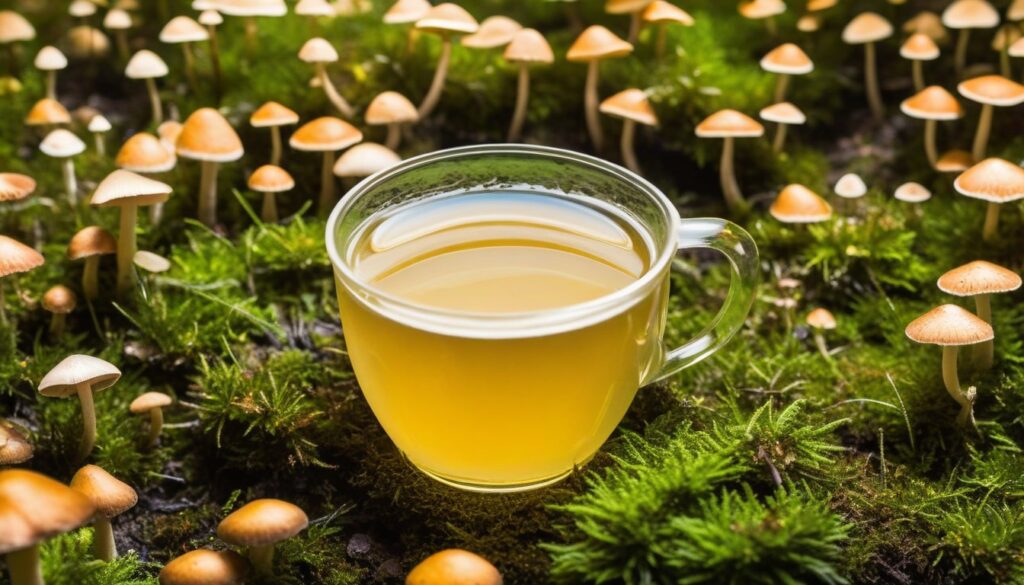If you’re interested in growing magic mushrooms at home, liquid culture is an easy and efficient method to try. This method involves growing mushrooms in liquid nutrient broth, which speeds up the cultivation process, produces higher yields, and is easier to propagate for future grows.
This comprehensive guide will take you through the step-by-step process of growing magic mushrooms using liquid culture. Whether you’re a seasoned grower or a beginner, you’ll find this guide straightforward and easy to follow.
Key Takeaways
- Magic Mushrooms Liquid Culture is an easy and efficient method for growing mushrooms at home.
- The liquid nutrient broth speeds up the cultivation process and produces higher yields.
- Liquid Culture is easier to propagate for future grows.
- This comprehensive guide will provide you with a step-by-step process of growing magic mushrooms using liquid culture.
- Whether you’re a seasoned grower or a beginner, you’ll find this guide easy to follow.
Understanding Magic Mushrooms Liquid Culture
Before you start growing magic mushrooms using liquid culture, it’s important to understand what liquid culture is and how it works. Liquid culture is a technique that involves growing mushroom mycelium in liquid nutrient-rich media.
Mycelium: The vegetative part of a fungus, consisting of a mass of branching, thread-like hyphae.
The liquid culture environment provides the mycelium with all the necessary nutrients to grow and flourish, resulting in faster colonization times and higher yield compared to other growing methods.
Note: Liquid culture is not a suitable method for growing all types of mushrooms.
The Importance of Understanding Liquid Culture
The success of growing magic mushrooms using liquid culture depends on understanding the concept of liquid culture and its benefits. By cultivating a clear understanding, you’ll be better equipped to navigate the growing process and succeed in your journey.
Here are some key points to consider when it comes to liquid culture:
- Liquid culture can encourage faster growth and mycelial propagation.
- It’s a suitable method for growing certain strains of magic mushrooms.
- It requires specific equipment and a sterile working environment to prevent contamination.
- It can provide a sustainable method to propagate and store mushroom cultures for future grows.
- It can offer a cost-effective way to grow mushrooms in larger quantities than traditional methods.
The Differences Between Liquid Culture and Other Growing Methods
While there are several methods of cultivating magic mushrooms, each has its unique advantages and disadvantages. Understanding the differences between liquid culture and other growing methods can help you choose the most suitable technique for your needs.
|
Method |
Advantages |
Disadvantages |
|---|---|---|
|
Spore Syringe |
Easy to acquire |
Low success rate |
|
Agar Plate |
Allows for isolating strains and identifying contaminate issues |
High contamination rate |
|
Grain Spawn |
Can be used to inoculate bulk substrates |
Can be time-consuming to prepare |
|
Liquid Culture |
Faster colonization and propagation rates than other methods |
Requires specific equipment and sterile working conditions |
Liquid culture has several advantages over traditional methods of mushroom cultivation, making it an excellent choice for growing magic mushrooms.”
Now that you have a clear understanding of liquid culture, let’s delve deeper into the benefits of using this technique in the next section.
The Benefits of Using Liquid Culture
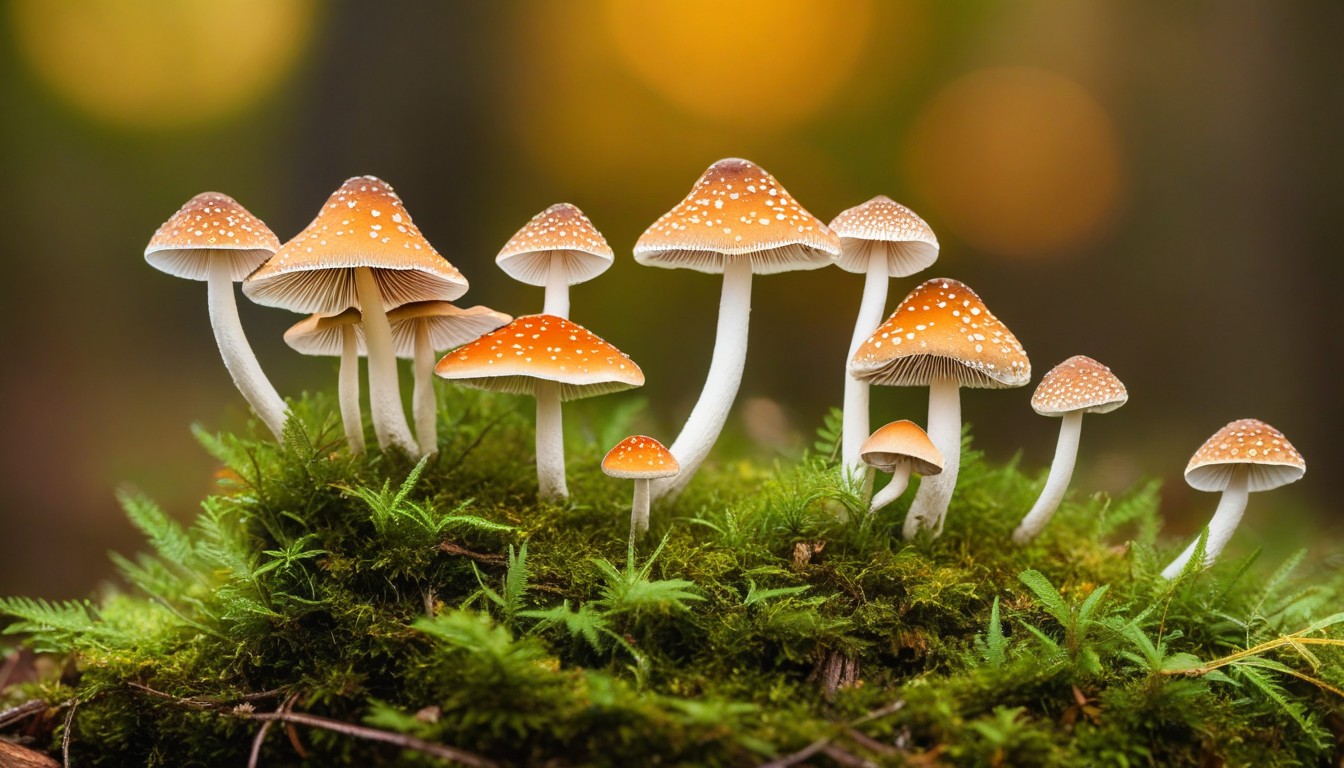
Liquid culture offers numerous benefits over traditional methods of mushroom cultivation. These benefits make it an excellent choice for people looking to grow magic mushrooms at home. Here are some of the key benefits of using liquid culture:
- Faster colonization times: Liquid cultures have been found to colonize substrates faster than solid cultures. This faster colonization time means that you’ll see faster results and a shorter lead time between inoculation and harvest.
- Higher yields: Liquid cultures can produce higher yields than other cultivation methods. With liquid cultures, you can produce more mushrooms with less time, effort, and resources.
- Easier to propagate mushroom cultures: Liquid cultures make it easy to propagate mushroom cultures for future grows. You can use a small amount of liquid culture to produce a larger, solid substrate culture, allowing you to grow multiple batches of mushrooms with the same initial culture.
- Cleaner growing process: Since you’re working with a liquid medium, you’re less likely to encounter contamination issues than with solid substrates. Liquid cultures are also easier to sterilize, providing a cleaner growing process.
Using liquid culture for growing magic mushrooms is a game-changer. With faster colonization times, higher yields, and easier propagation, it’s the preferred cultivation method for many growers.”
Overall, using liquid culture for growing magic mushrooms is an excellent choice for beginners and experienced growers alike. The benefits of liquid culture far outweigh any potential drawbacks, and you’re sure to enjoy a successful and fruitful mushroom cultivation experience.
Setting Up Your Liquid Culture Lab
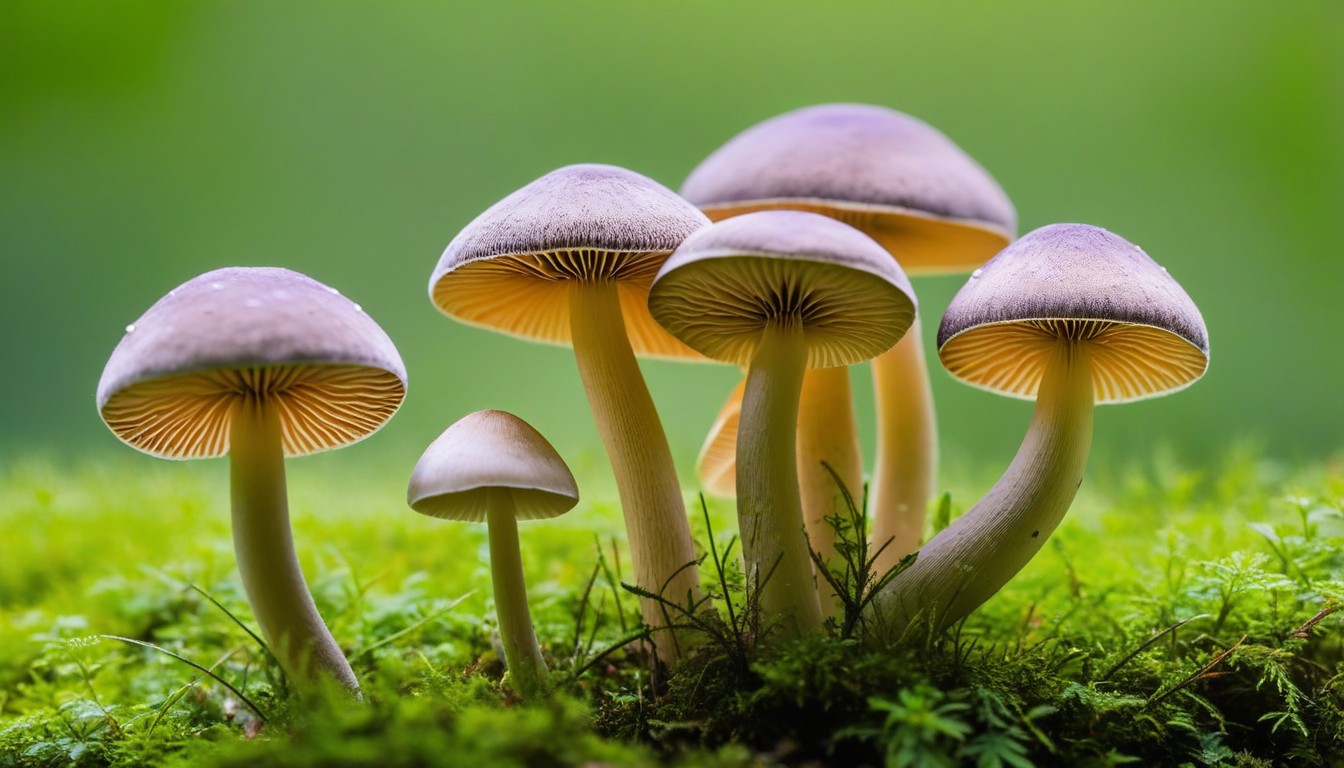
Creating a conducive environment for your liquid culture is vital for a prosperous mushroom growing experience. Follow these steps to set up your liquid culture lab:
Equipment
You’ll need the following equipment to set up your lab:
|
Equipment |
Quantity |
|---|---|
|
Pressure cooker/autoclave |
1 |
|
Alcohol lamp or butane torch |
1 |
|
Disposable gloves |
Several pairs |
|
Face mask |
1 |
|
Surgical scalpel or blade |
1 |
|
Alcohol spray bottle (70% isopropyl alcohol) |
1 |
|
Clean oven or a clean place to work |
1 |
|
Pressure cooker/autoclave tape |
1 |
Sterilization Techniques
Proper sterilization techniques are crucial to prevent contamination of your liquid culture. Follow these steps:
- Put your equipment into the pressure cooker/autoclave and run it on a full cycle of 15 PSI pressure and 121℃ for 90 minutes to sterilize.
- After sterilization, allow the equipment to cool for at least 30 minutes before handling it.
- Sterilize your work area by wiping it down with a 70% isopropyl alcohol solution.
- Perform all tasks in your sterile environment to maintain aseptic conditions.
Other Essential Considerations
Aside from equipment and sterilization techniques, other essential considerations to maintain a clean and productive growing environment include:
- Wash hands and wear disposable gloves and a face mask throughout the process.
- Use a laminar flow hood or glovebox if available for better contamination prevention.
- Follow the steps provided in the next sections carefully and do not rush the process.
By following these steps, you’ll have a setup for your liquid culture lab that fosters a healthy and productive environment for growing magic mushrooms.
Making Magic Mushrooms Liquid Culture
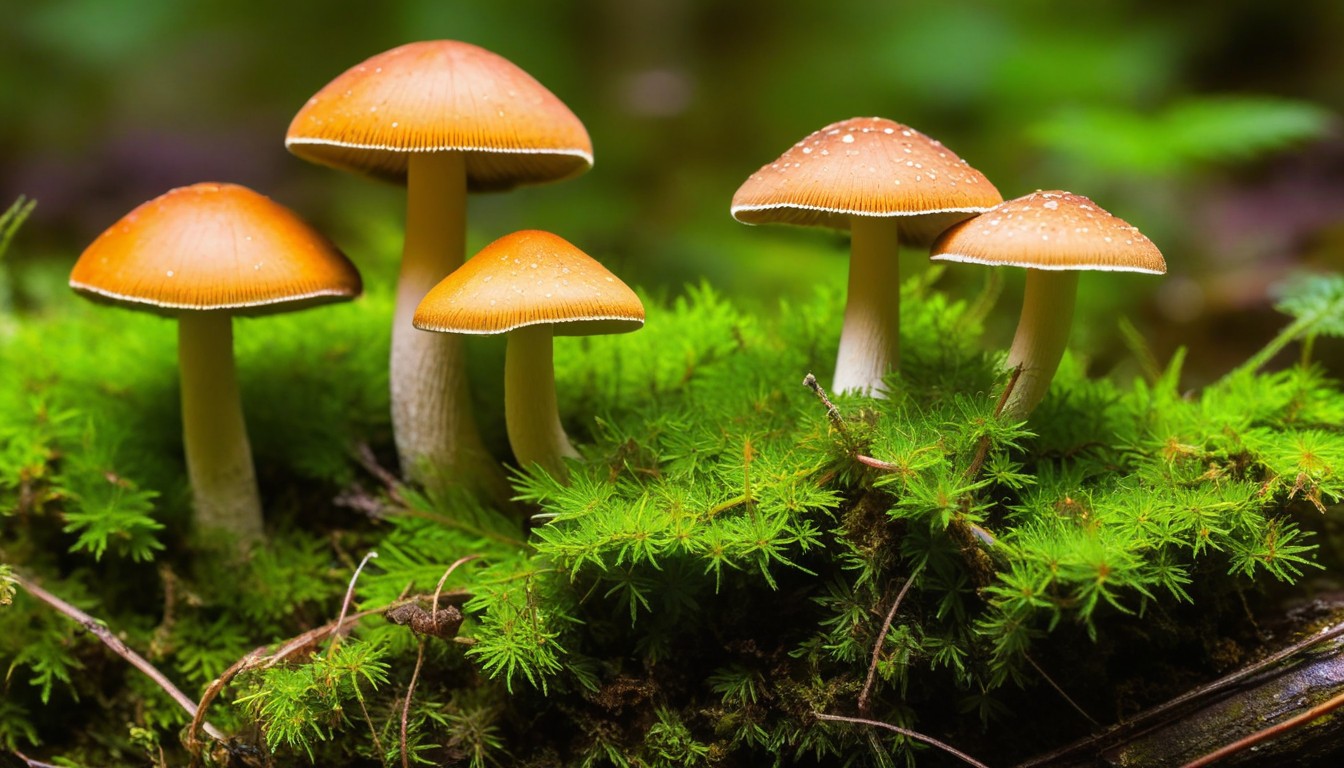
Creating your own magic mushrooms liquid culture is a simple and straightforward process. Here, we offer a step-by-step guide to help you prepare your nutrient-rich liquid medium and inoculate it with mushroom spores or mycelium.
Step 1: Creating the Nutrient Medium
The first step in making magic mushrooms liquid culture is to create a nutrient-rich medium for your mushroom spores or mycelium. You can use a pre-made liquid culture medium or make your own using the following ingredients:
|
Ingredients |
Amount |
|---|---|
|
Light malt extract |
15 grams |
|
Dextrose |
10 grams |
|
Agar |
2 grams |
|
Distilled water |
500 ml |
Mix the ingredients in a beaker, then heat the mixture until it boils. After boiling, stir the mixture for a few minutes, then pour it into a sterilized jar or flask.
Step 2: Inoculating the Medium
Once your nutrient medium has cooled to room temperature, it’s time to inoculate it with your chosen mushroom spores or mycelium. Follow these steps:
- Sterilize your inoculation tool (such as a syringe) by heating it with a flame until it glows red.
- Allow the tool to cool for a few seconds, then insert it into your spore or mycelium solution.
- Draw up the solution into the syringe.
- Insert the syringe into the sterilized jar or flask containing your nutrient medium.
- Slowly inject the spore or mycelium solution into the nutrient medium, making sure it’s evenly distributed.
Step 3: Sealing and Incubating the Culture
After inoculating your nutrient medium, seal the jar or flask with a sterilized cap or stopper, then incubate it in a dark, warm place (between 75 and 80 degrees Fahrenheit) for several days to a week. This will allow the mycelium to colonize the nutrient medium, creating a robust and healthy liquid culture.
It’s important to monitor the culture during incubation and watch for signs of contamination, such as mold growth or foul odors. If contamination is detected, discard the culture and start over.
Once your magic mushrooms liquid culture is fully colonized, it’s ready to be transferred to a solid substrate to foster mycelial growth.
Remember to always follow sterilization techniques and maintain proper aseptic conditions to avoid contamination and ensure a successful growing experience.
Cultivating Magic Mushrooms from Liquid Culture
Once your liquid culture is ready, it’s time to transfer it to a solid substrate to foster mycelial growth. We recommend using a grain or agar substrate to ensure the best results.
Transferring Liquid Culture to a Solid Substrate
When transferring the liquid culture, it’s important to maintain a sterile working environment. Ensure that all equipment, including your hands, is properly sterilized to avoid contamination.
The process for transferring your liquid culture to a solid substrate is as follows:
- Prepare the solid substrate by sterilizing it in a pressure cooker or autoclave.
- Cool the substrate to room temperature.
- Add a small amount of the liquid culture to the substrate, evenly distributing it throughout.
- Seal the container and store it in a warm, dark place to encourage mycelial growth.
Fruiting and Harvesting Magic Mushrooms
Once your mycelium has fully colonized the substrate, it’s time to initiate fruiting. This involves creating the right environment to stimulate the growth of fruiting bodies, or mushrooms.
The ideal fruiting conditions are:
|
Factor |
Ideal Condition |
|---|---|
|
Temperature |
70-75°F (21-24°C) |
|
Humidity |
90-95% |
|
Light |
12 hours of indirect light per day |
After initiating fruiting, it can take anywhere from 1-2 weeks for the mushrooms to mature. Once they reach full maturity, they can be harvested by gently twisting or cutting them off the substrate.
Troubleshooting Common Issues
During the cultivation process, common issues can arise that may impact your results. Here are a few of the most common issues and how to troubleshoot them:
- If you notice slow growth rates, ensure that your environment is warm enough and that the substrate is receiving enough water and nutrients.
- If you see signs of contamination, including unusual colors or smells, discard the affected substrate and start over with fresh materials.
- If your mushrooms are developing abnormally or not at all, it could be due to a lack of humidity or light. Adjust these factors accordingly to promote healthy growth.
By troubleshooting these common issues, you can ensure a successful and rewarding cultivation experience.
Troubleshooting Common Issues
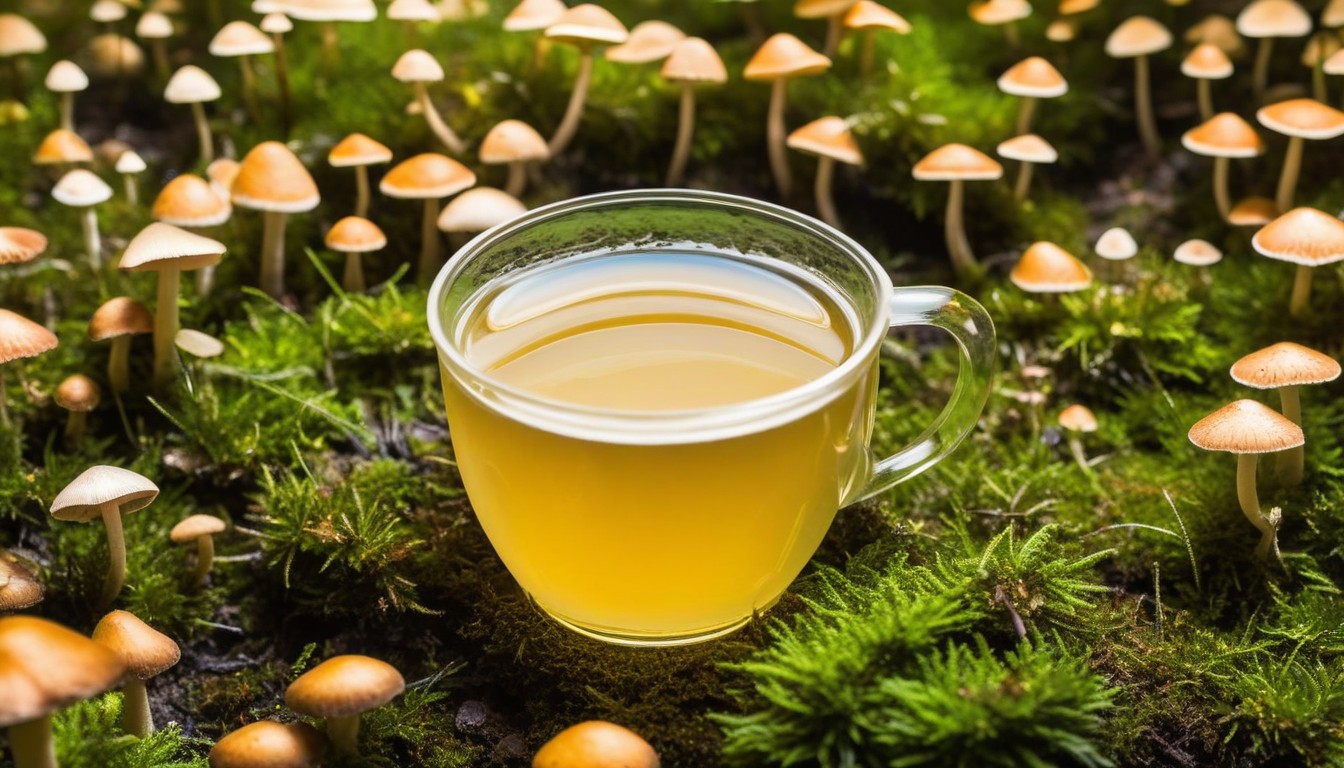
As with any growing process, issues can arise when cultivating magic mushrooms using liquid culture. Here are some common problems that growers encounter and solutions to overcome them:
Contamination Issues
Contaminants, such as bacteria or mold, can easily ruin your liquid culture. To prevent contamination, make sure your lab is clean and sterile before starting the process. Use a high-quality spore syringe or mycelium culture to inoculate the liquid medium. If contamination does occur, discard the contaminated culture and start over with fresh ingredients.
Slow Growth Rates
Slow growth can be caused by several factors, including low temperatures, poor lighting, or inadequate nutrient levels. Make sure your lab environment is warm and well-lit, and that you are using a nutrient-rich liquid medium. If growth is still slow, consider adjusting the pH level of the medium or adding additional nutrients.
Poor Yield
If your yield is lower than expected, it could be due to a lack of moisture, inadequate ventilation, or improper harvesting techniques. Make sure your substrate is moist and well-ventilated, and harvest your mushrooms when the caps have fully opened. If you’re still not seeing the desired yield, consider adjusting the humidity levels or experimenting with different strains.
Tip: Keep detailed notes of your growing process, including temperature, humidity, and substrate information. This will help you identify patterns and make adjustments for future grows.
Expanding Your Magic Mushrooms Liquid Culture
After successfully growing magic mushrooms using liquid culture, you may want to expand your cultivation efforts. There are several methods for expanding your liquid culture:
Cloning
Cloning is the process of taking a small section of mycelium from a mature mushroom fruiting body and using it to inoculate a fresh substrate. This method ensures that the new growth will be genetically identical to the mature mushroom. Cloning is a great way to expand your liquid culture and continue growing your favorite strains.
Transferring Cultures
Transferring cultures is the process of taking a small section of mycelium from one culture medium and transferring it to another. This technique is useful for growing different strains of magic mushrooms and experimenting with different substrates.
Creating Master Cultures
A master culture is a large culture that is used to inoculate multiple smaller cultures. Creating a master culture allows you to produce a large number of cultures from a single source, making it an efficient method for expanding your liquid culture.
When expanding your liquid culture, it’s essential to maintain proper sterilization techniques and maintain a clean and sterile environment to prevent contamination.
Conclusion
Thank you for taking the time to read this comprehensive guide on growing magic mushrooms using liquid culture. With this knowledge, you can now embark on your own journey of cultivating these fascinating fungi in the comfort of your home.
Remember, patience and proper techniques are key to a successful harvest. Be sure to follow the steps outlined in this guide, and don’t hesitate to troubleshoot any issues that may arise.
Taking It Further
If you’re interested in delving deeper into the world of mushroom cultivation, there are many resources available that can help you expand your knowledge and skills. Consider joining online communities or forums, attending workshops or classes, or exploring additional literature on the subject.
With dedication and a little bit of magic, you’ll soon be enjoying the fruits of your labor with a bountiful harvest of your very own homegrown magic mushrooms. Happy growing!
FAQ
What is magic mushrooms liquid culture?
Magic mushrooms liquid culture refers to the cultivation technique that involves using a liquid medium to grow mushroom mycelium. It provides a nutrient-rich environment for the mycelium to thrive and eventually produce mushrooms.
How does liquid culture differ from other cultivation methods?
Liquid culture differs from other cultivation methods, such as spore syringes or agar plates, as it provides a more efficient way to propagate mushroom cultures. It allows for faster colonization times, higher yields, and the ability to easily transfer and multiply cultures.
What are the benefits of using liquid culture?
Using liquid culture offers several benefits, including faster colonization times, higher yields, and the ability to easily propagate mushroom cultures for future grows. It also provides a more cost-effective and efficient method for cultivating magic mushrooms at home.
How do I set up a liquid culture lab?
Setting up a liquid culture lab requires a few essential steps. You’ll need to gather the necessary equipment, such as sterile containers, a pressure cooker for sterilization, and a laminar flow hood or a still-air box. It’s crucial to maintain a clean and sterile environment to prevent contamination.
How do I make magic mushrooms liquid culture?
Making magic mushrooms liquid culture involves preparing a nutrient-rich liquid medium and inoculating it with mushroom spores or mycelium. The medium is typically composed of various ingredients like malt extract, dextrose, and yeast extract. Sterilization is essential to ensure aseptic conditions and prevent contamination.
How do I cultivate magic mushrooms from liquid culture?
To cultivate magic mushrooms from liquid culture, you’ll need to transfer the liquid culture to a solid substrate, such as grain or agar. This allows the mycelium to colonize and grow. Once the mycelium has fully colonized the substrate, you can initiate the fruiting process and harvest the magic mushrooms.
What are some common issues with magic mushrooms liquid culture, and how can I troubleshoot them?
Common issues with magic mushrooms liquid culture include contamination, slow growth rates, and weak or unhealthy mycelium. To troubleshoot these problems, it’s important to maintain proper sterilization techniques, ensure a clean growing environment, and use quality spore or mycelium sources. Identifying and addressing issues early can help prevent further problems.
How can I expand my magic mushrooms liquid culture?
You can expand your magic mushrooms liquid culture through techniques such as cloning, transferring cultures to fresh substrates, or creating master cultures. These methods allow you to multiply your mushroom cultures and explore different strains and varieties.

